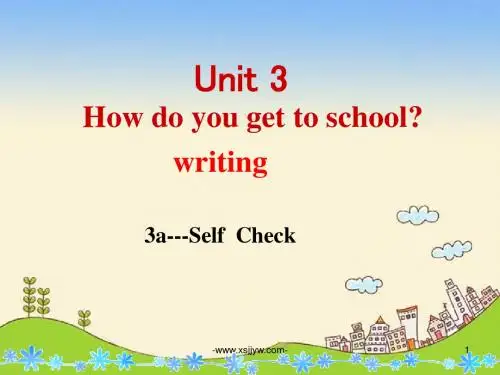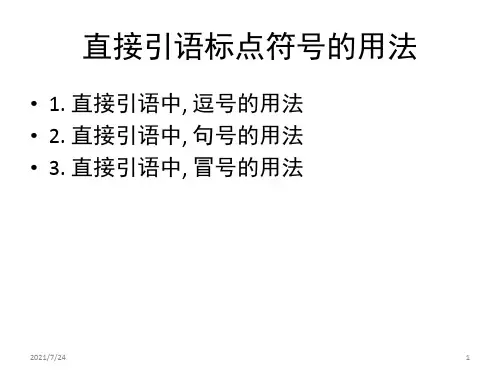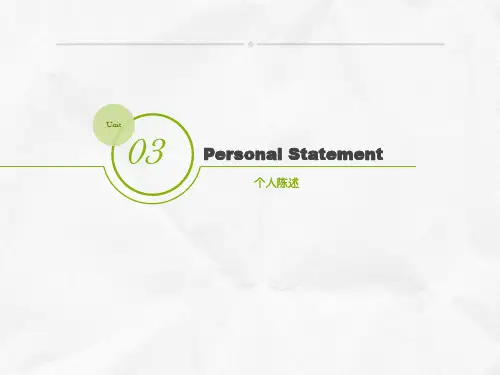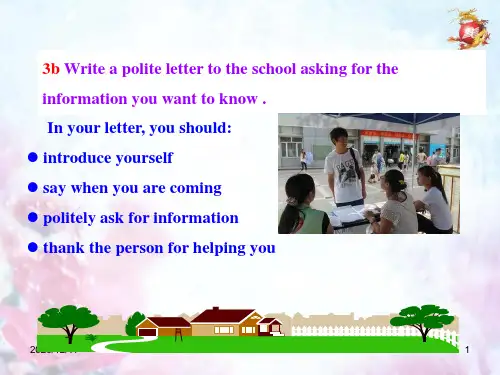多用逗号,如:
• A. He said, “I have found the key.” • B. He said, “I think you and I should be friedns.”
2021/7/24
2
2. 说明语插在中间将直接引语分成 前后两部分
• 2.1 当直接引语的前一部分不能构成意思完整 的句子时, 说明语后用逗号, 如:
2021/7/24
5
练习
• “Is your cab available?” I asked when he finally looked up at me. He nodded, then said apologetically as I settled into the back seat, “I’m sorry, but I was reading a letter.” He sounded as if he had a cold or something. “I’m in no hurry,” I told him. “Go ahead and finish your letter.” He shook his head. “I’ve read it several times already. I guess I almost know it by heart.” “Letters from home always mean a lot,” I said. “At least they do with me because I’m on the road so much.” Then, estimating that he was 60 or 70 years old, I guessed,“From a child or maybe a grandchild?” “This isn’t family,” he replied. “Although,” he went on, “come to think of it, it might just as well have been family. Old Ed was my oldest friend. In fact, we used to call each other ‘Old Friend’ — when we’d meet, that is. I’m not much of a hand at writing.”









![[课件]:Unit 3 writing](https://uimg.taocdn.com/ab5e380e336c1eb91a375d7f.webp)
